40 Forgotten Concept Cars That Once Turned Heads
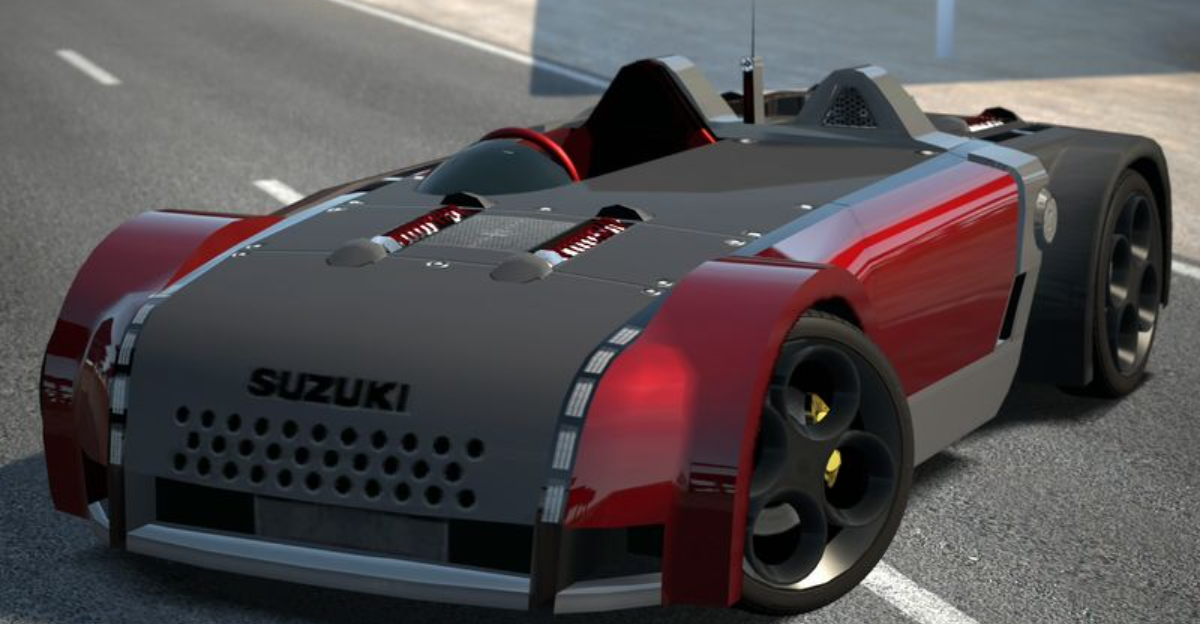
Concept cars are where designers let their imaginations run wild, crafting machines that look like they belong in comic books or spaceports.
Some sparked excitement at auto shows, flashing wild shapes, wild colors, and even wilder ideas. For a moment, they stole the spotlight and hinted at a future that never quite arrived.
Then they vanished, tucked away in dusty archives or museum corners. Forgotten by most, these machines once had crowds staring, jaws dropping, and dreams shifting into overdrive.
1. Buick Y-Job

Harley Earl’s masterpiece from 1938 wasn’t just a car – it was a revolution on wheels.
The sleek convertible introduced hidden headlights, electric windows, and flush door handles when most cars still resembled fancy boxes.
General Motors used this beauty as a daily driver for years after its debut, proving concepts could actually function in the real world.
The Y-Job’s influence echoed through Buick’s design language for decades, making it the grandfather of all American concept cars.
2. Ford Nucleon
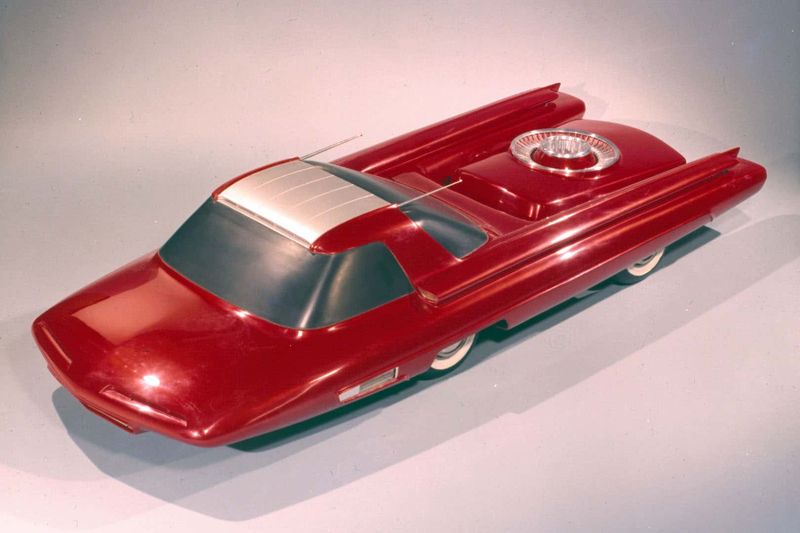
Radiation on the road? Ford’s atomic-powered concept from 1958 proposed replacing gasoline with a miniature nuclear reactor in the trunk.
Engineers genuinely believed nuclear energy would soon power everything from homes to vehicles.
The car’s submarine-inspired rear housed a hypothetical reactor that would need refueling only once every 5,000 miles.
Thankfully, this radioactive road warrior never made it past the scale model stage – imagine the fender bender insurance claims!
3. Chevrolet XP-755 Mako Shark
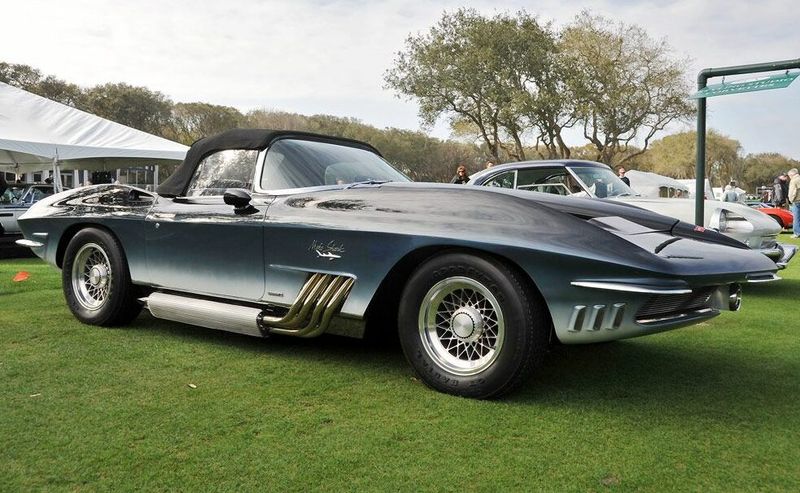
Legend has it that Bill Mitchell, GM’s design chief, caught a mako shark while fishing and became obsessed with recreating its colors and predatory shape.
The painters struggled to match the blue-to-white gradient of the real shark until they allegedly snuck into Mitchell’s office and painted his prized mounted shark to match the car!
Unveiled in 1961, this aggressive beauty directly influenced the iconic 1963 Corvette Sting Ray. Look at those gill-like side vents and pointed nose – pure underwater inspiration.
4. Dodge Firearrow IV
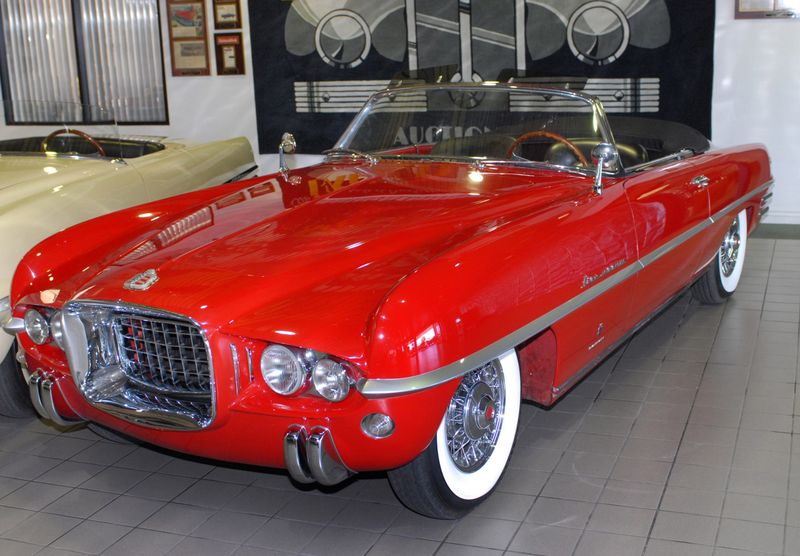
Virgil Exner’s stunning 1954 creation came tantalizingly close to production.
The fourth and final iteration of the Firearrow series, this red beauty represented Chrysler’s “Forward Look” design philosophy with its clean lines and European flair.
Wealthy enthusiast Eugene Casaroll was so smitten he bought the rights and produced a slightly modified version called the Dual-Ghia.
Only 117 of these transformed Firearrows were built, becoming favorites of Frank Sinatra and the Rat Pack.
5. Pontiac Banshee
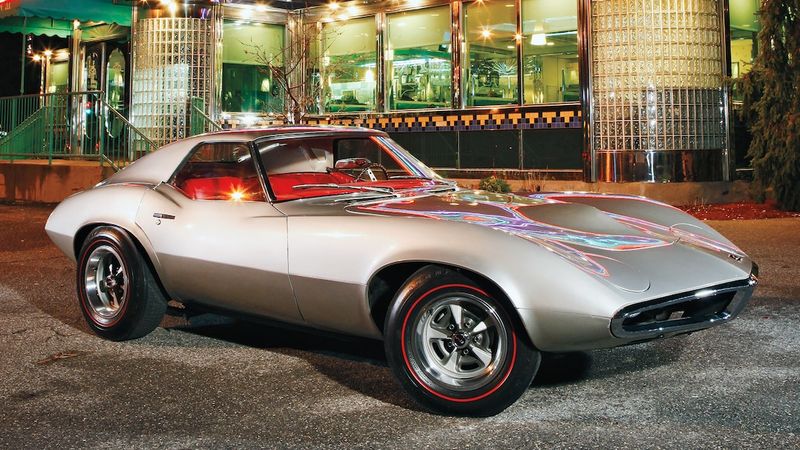
Poor John DeLorean (yes, that DeLorean) created something too good in 1964. His sleek two-seater Banshee was lighter, potentially faster, and would have been cheaper than the Corvette – GM’s golden child.
Corporate politics sealed its fate. Executives feared it would cannibalize Corvette sales and ordered all prototypes destroyed.
Miraculously, two survived – a white coupe and a silver convertible. The Banshee’s DNA lived on though, influencing both the ’68 Corvette and third-generation Firebird.
6. Oldsmobile Golden Rocket
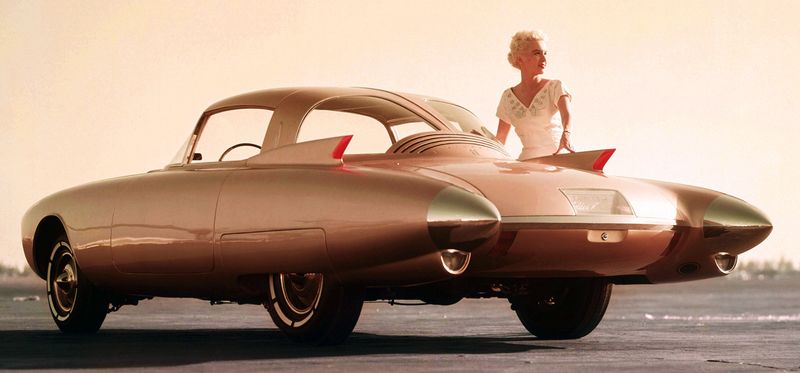
Blast off! The 1956 Golden Rocket debuted before Sputnik even launched, yet looked ready for interplanetary travel.
Its gold-colored, missile-shaped body featured a bubble cockpit and dramatic fins that screamed “cosmic cruiser.”
Ahead of its time, the seats would automatically swivel outward when the doors opened. The dashboard moved with the steering wheel to maintain perfect visibility of the gauges.
Though it never reached production, this concept’s astronomical styling influenced Oldsmobile’s late-50s models.
7. Chrysler Turbine Car

Imagine a car that could run on tequila, perfume, or peanut oil! Chrysler’s copper-colored marvel from 1963 packed a jet turbine engine that could burn practically any flammable liquid.
The distinctive whooshing sound earned it the nickname “the flying living room.”
Fifty cars were built and loaned to everyday families for real-world testing. Most were destroyed afterward, with only nine surviving today.
The program ultimately failed because of poor fuel economy and high manufacturing costs, but remained one of the boldest automotive experiments ever.
8. Ford Indigo
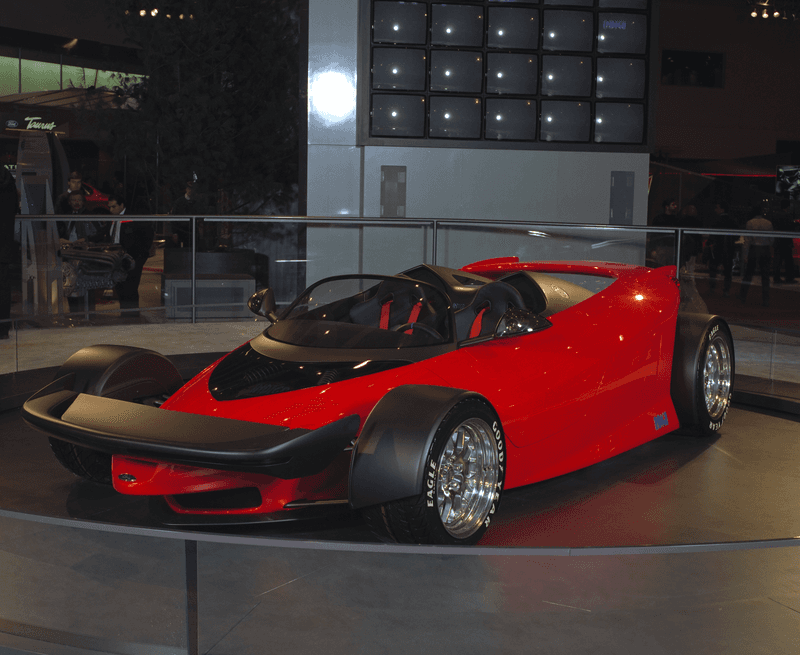
Racing fans drooled when Ford unveiled this low-slung beast in 1996. Developed with help from the Reynard racing team, the Indigo packed a screaming V12 engine mounted behind the cockpit like a proper race car.
The open-wheel design and central driving position made it essentially a Formula One car with headlights.
Ford actually built two – a non-running show car and a fully functional prototype that could hit 170 mph. Video gamers might recognize it from appearances in several racing games, including Ford Racing.
9. Cadillac Sixteen

Excess never looked so good! Cadillac’s jaw-dropping 2003 super-luxury concept revived the legendary “Sixteen” name with an appropriately massive 13.6-liter V16 engine producing 1,000 horsepower.
The handcrafted interior featured Bulgari instruments and more wood than a forest.
At nearly 19 feet long, this modern land yacht could deactivate cylinders to run on just four, eight, or all sixteen depending on power needs.
While too outrageous for production, its bold design language shaped Cadillacs for the next decade.
10. Plymouth XNR
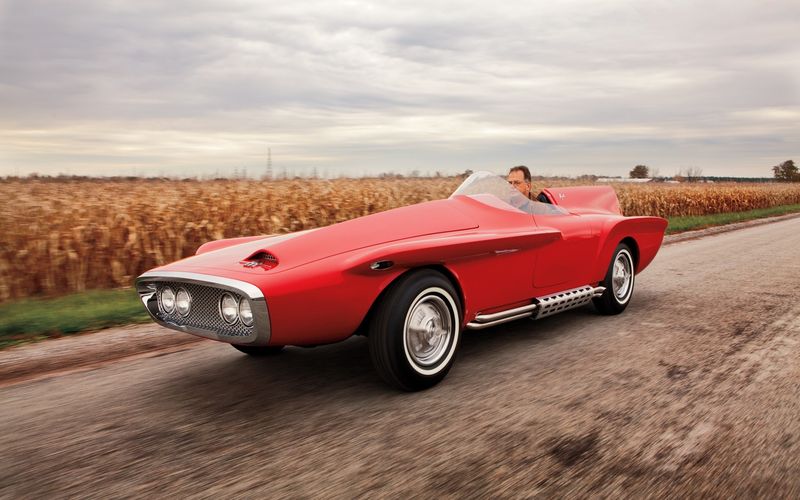
Virgil Exner’s personal playground of weird, the 1960 XNR (pronounced “Exner”) featured a driver-focused asymmetrical design that would make modern safety engineers faint.
The driver’s side had a dramatic fin while the passenger side remained flat.
Built on a modified Valiant chassis, the copper roadster packed a slant-six engine pumped up to 250 horsepower.
After touring the show circuit, it was sold to the Shah of Iran, then smuggled out during the revolution, and eventually restored to its original glory.
11. GM Firebird III

Conventional steering wheels? So passé! The 1958 Firebird III replaced them with a joystick called the “Unicontrol” that handled steering, acceleration, and braking with one hand.
Its bubble canopy and seven fins made it look more like a fighter jet than a family car.
Powered by a gas turbine engine, this space-age oddity featured air conditioning, cruise control, and anti-lock brakes decades before they became common.
The ultrasonic key system could automatically open doors as the driver approached – pure science fiction in the Eisenhower era!
12. Lincoln Futura
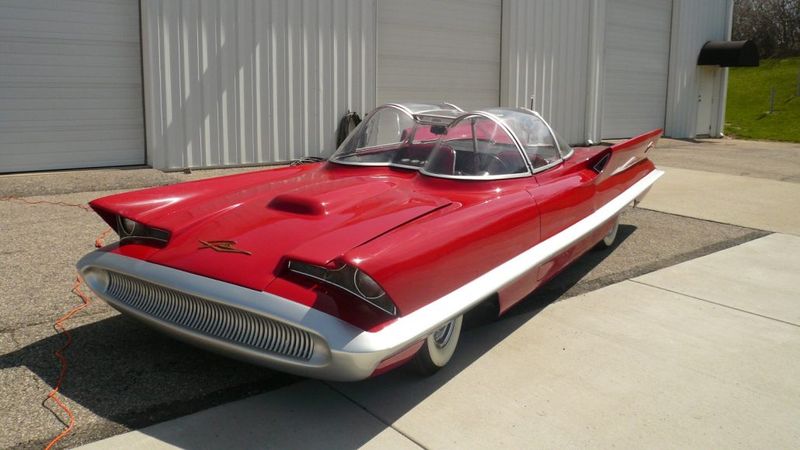
Before fighting crime in Gotham, this concept car wowed crowds in pearlescent frost-blue paint.
Hand-built in Italy for the astronomical sum of $250,000 in 1955 (over $2.7 million today), the Futura featured a double-bubble canopy and outrageous hooded headlights.
After its show career ended, customizer George Barris bought it for $1 and transformed it into the iconic 1966 Batmobile in just three weeks.
Talk about an incredible return on investment – the Batmobile later sold at auction for $4.62 million!
13. AMC AMX/3

American Motors Corporation shocked everyone in 1970 with this Italian-American stunner.
Developed with help from Giotto Bizzarrini (who worked on the Ferrari 250 GTO), the mid-engined masterpiece could hit 170 mph and tackle corners like European exotics costing twice as much.
AMC planned to build 5,000 per year, but financial troubles and new safety regulations destroyed the project.
Only six prototypes were completed before cancellation. One prototype even outperformed the benchmark De Tomaso Pantera in testing!
14. Chevrolet Astro II
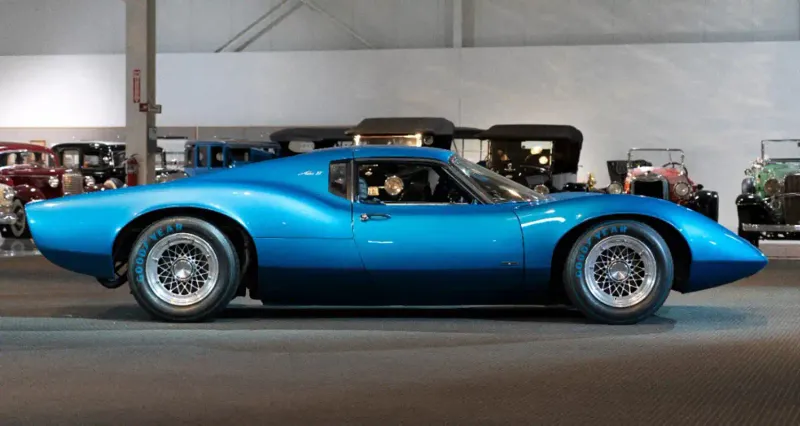
Decades before the C8 Corvette, Chevy flirted with putting the engine behind the driver in this stunning 1968 concept.
Standing just 35.5 inches tall – shorter than your average 4-year-old – the Astro II looked ready to race at Le Mans straight from the show floor.
Engineers mounted a 427 cubic inch V8 backward to keep the height ultra-low. The gearbox sat ahead of the rear axle for perfect weight distribution.
Though it never reached production, the Astro II began Chevy’s 50-year journey toward the mid-engine Corvette.
15. Honda HP-X
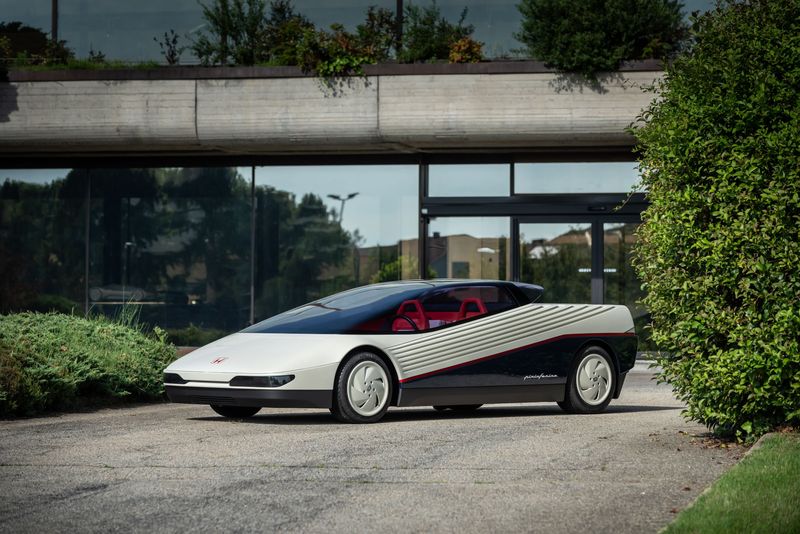
Long before Ayrton Senna worked his magic on the NSX, Honda revealed this wedge-shaped wonder in 1984.
The “Honda Pininfarina eXperimental” was the Japanese brand’s first serious attempt at a supercar, featuring a mid-mounted 2.0L V6 engine.
Its impossibly low nose and canopy-style cockpit looked straight out of a sci-fi movie.
Though radically different from the production NSX that eventually appeared in 1990, the HP-X established Honda’s commitment to creating a supercar that could challenge Ferrari with Japanese reliability.
16. Nissan MID4
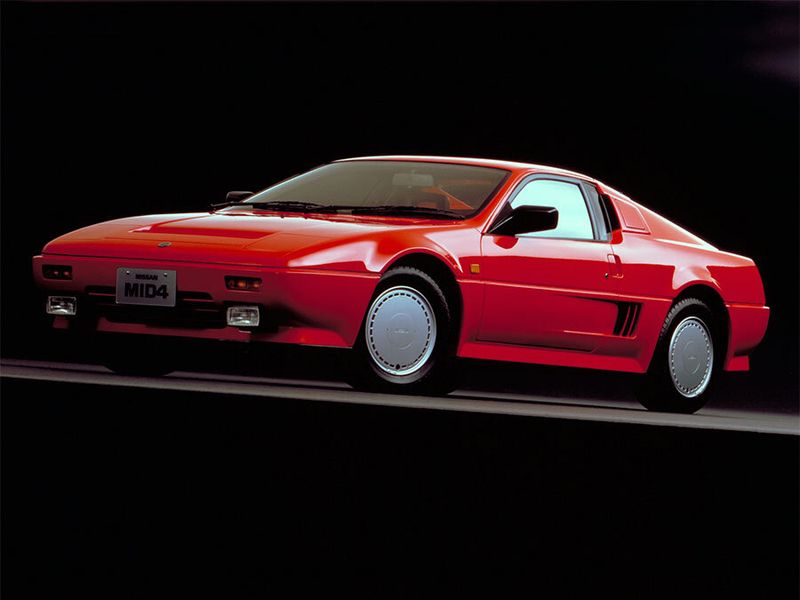
Imagine if Nissan had launched a competitor to the Ferrari 328 and Porsche 944 back in 1985? The MID4 concept packed a mid-mounted 3.0L V6 with all-wheel drive when most supercars were still rear-wheel only.
Unlike many concepts, this was a fully functioning prototype that journalists actually got to drive.
The technology developed for the MID4 didn’t go to waste – its ATTESA all-wheel-drive system and HICAS four-wheel steering later appeared in the legendary Skyline GT-R.
17. Toyota Alessandro Volta
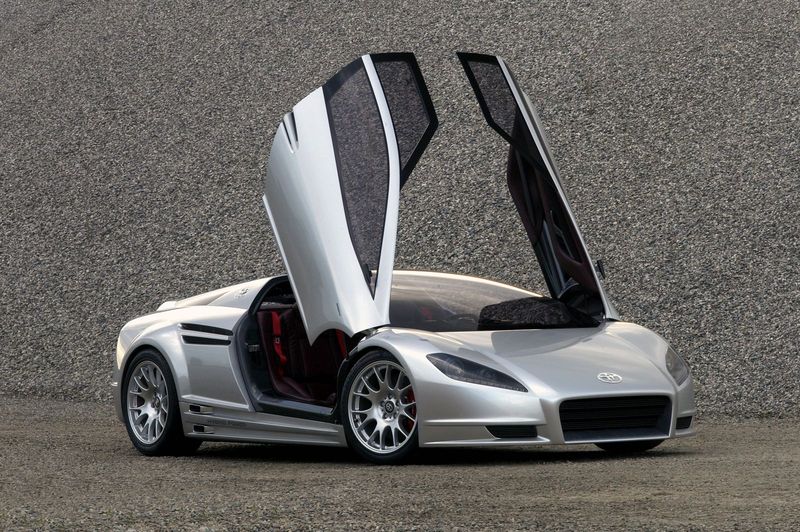
Named after the inventor of the battery, this 2004 stunner predicted the hybrid supercar revolution years before the Porsche 918 and McLaren P1.
Its carbon fiber body housed Toyota’s 3.3L V6 working in harmony with electric motors at each axle – technology that seemed like fantasy at the time.
The three-seater configuration placed the driver front and center (like the McLaren F1) with passengers slightly behind.
Though it never reached production, the Volta’s hybrid performance concepts eventually filtered down to the Lexus LC500h.
18. Mitsubishi HSR
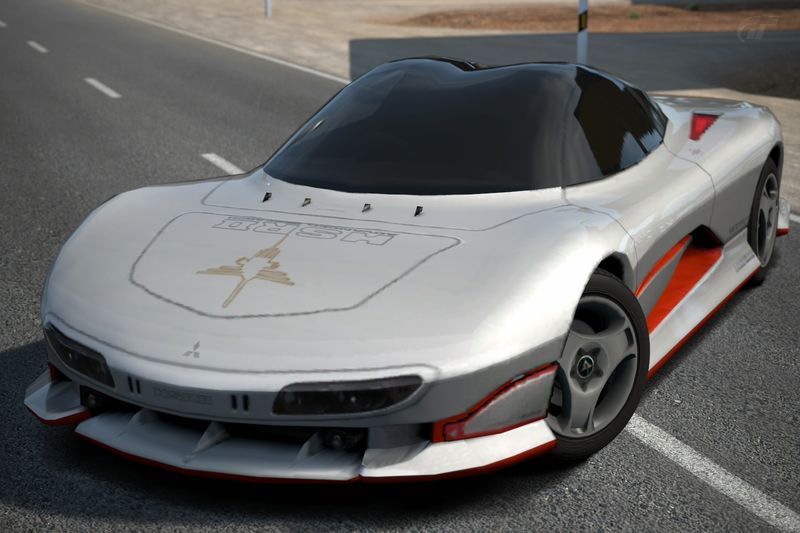
Aerodynamics gone wild! The HSR (Highly Sophisticated-transport Research) series culminated in the HSR-II from 1989, featuring active aero that physically transformed the car’s shape at different speeds.
The body panels and wings would automatically adjust for maximum efficiency. This technological tour de force packed four-wheel steering, active suspension, and a 3.0L V6 engine.
The HSR’s adaptive aerodynamics were decades ahead of their time – similar systems didn’t appear on production cars until much later. Its technology influenced the legendary Mitsubishi 3000GT.
19. Mazda RX-500
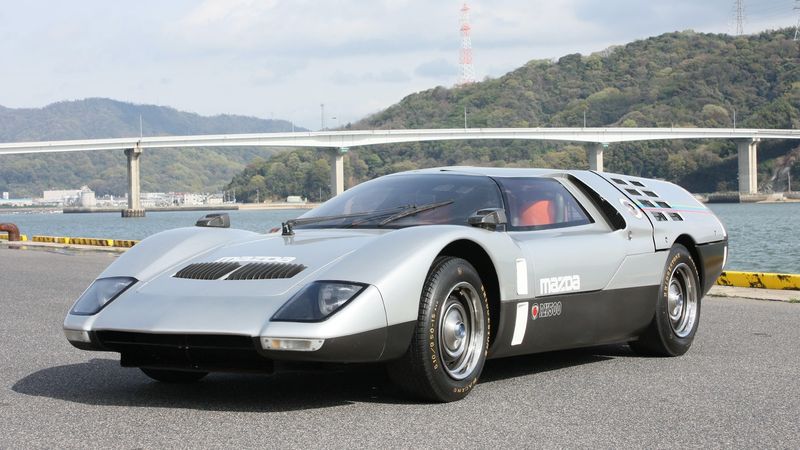
Celebrating Mazda’s 50th anniversary in 1970, this wild concept featured a mid-mounted rotary engine and gullwing doors before either was cool.
The strangest feature? Color-changing taillights that indicated whether the car was accelerating (green), cruising (amber), or braking (red).
Weighing just 1,850 pounds and powered by a 491cc twin-rotor engine, this lime green wonder could scream to 150 mph.
After disappearing for decades, the RX-500 was rediscovered in a warehouse and restored to its former glory by Mazda’s heritage department.
20. Subaru B11S
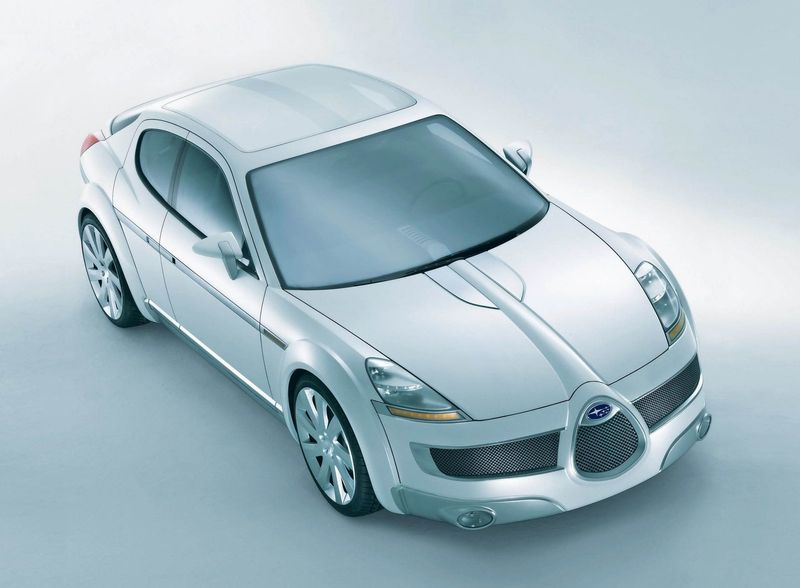
Before four-door coupes became fashionable, Subaru created this sleek grand tourer in 2003.
The gullwing doors opened to reveal a surprisingly practical four-seat interior – blending sports car excitement with family car practicality.
Powered by a twin-turbo boxer engine and all-wheel drive, the B11S previewed styling elements that would appear on production Subarus for years.
The concept’s designer, Andreas Zapatinas (formerly of Alfa Romeo), brought European flair to the Japanese brand.
21. Volkswagen W12 Nardò
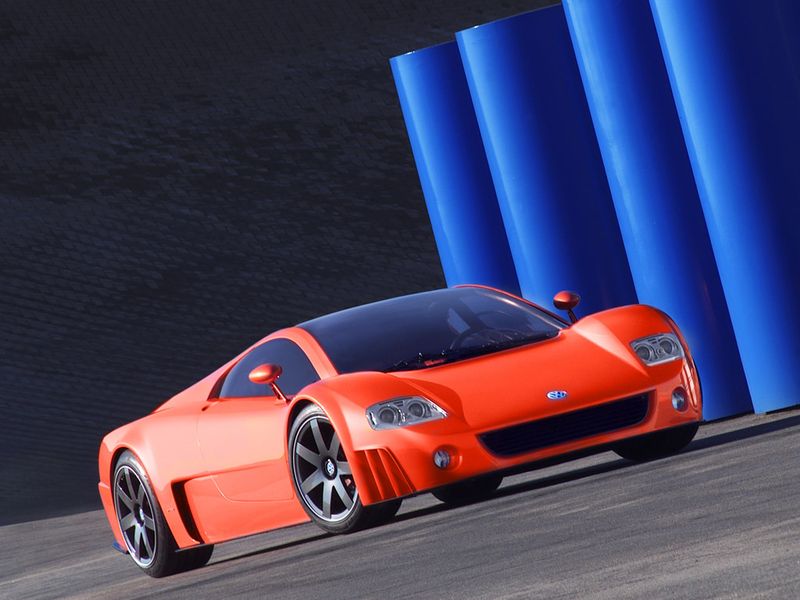
Volkswagen building a supercar? The W12 Nardò proved they could in 2001.
Named after the Italian test track where it set a 24-hour speed record (averaging 183 mph), this mid-engine monster packed a 591-horsepower W12 engine.
The bright orange stunner was fully functional, not just a show piece. VW ultimately decided against production, but the incredible W12 engine later found homes in the Bentley Continental GT and Audi A8.
The concept demonstrated VW Group’s engineering prowess and helped elevate the brand’s image.
22. Lancia Stratos Zero
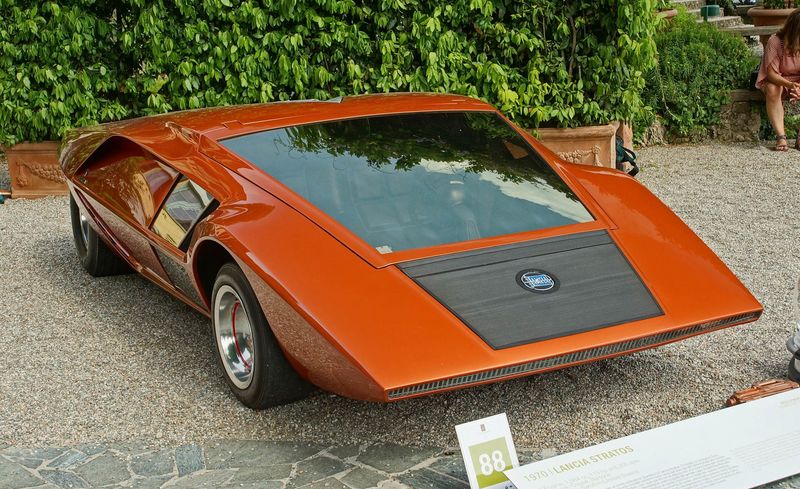
Jaws dropped when this impossibly low concept appeared in 1970. Standing just 33 inches tall, the Bertone-designed wedge was so low that entering required lifting a hinged windshield and stepping onto the seat!
The triangular doorstop shape influenced car design for a decade afterward. While it never reached production in this form, it directly inspired the legendary Lancia Stratos rally car.
The Zero even made a cameo in Michael Jackson’s “Moonwalker” film – that’s how futuristic it still looked in the 1980s.
23. Alfa Romeo Carabo

Marcello Gandini’s geometric masterpiece from 1968 looked like it was folded from sheet metal rather than sculpted.
The wedge-shaped Carabo (named after a beetle with iridescent green and orange coloring) pioneered scissor doors years before Lamborghini made them famous.
Based on the Alfa Romeo 33 Stradale chassis, this concept’s sharp angles and flat surfaces represented a dramatic departure from the curvy designs of the era.
Its influence can’t be overstated – the Carabo’s DNA is visible in everything from the Lamborghini Countach to modern stealth fighters.
24. Bertone Genesis

Lamborghini engine, minivan seating – the 1988 Bertone Genesis was the mullet of concept cars!
Based on Lamborghini Countach running gear, this family-friendly supercar packed a mid-mounted V12 with luxurious seating for five.
The driver sat centrally like in a McLaren F1, with a swiveling captain’s chair that turned toward the opening door.
Though it looked like something from a sci-fi movie, the Genesis actually previewed the premium minivan concept years before vehicles like the Mercedes R-Class attempted the same formula.
25. Italdesign Aztec

Why share a cockpit when you can each have your own? The 1988 Aztec from legendary designer Giorgetto Giugiaro featured separate bubbles for driver and passenger, connected by an intercom system.
External control panels allowed onlookers to check vehicle data. The silver spaceship actually saw limited production – 50 were built at roughly $750,000 each in 1992.
Powered by Audi’s turbocharged five-cylinder engine, the Aztec was fully functional. One even appeared in the Japanese film “Gamera: Guardian of the Universe.”
26. Isuzu Como

Years before the Nissan Murano CrossCabriolet or Range Rover Evoque Convertible, Isuzu created this quirky SUV-convertible hybrid in 1991.
The Como featured a retractable hardtop that stowed neatly under the rear deck at the push of a button. The boxy styling included an integrated roll bar and two-tone paint scheme.
While Isuzu never put it into production, the Como predicted the convertible SUV trend that would emerge decades later.
Its four-wheel drive system and raised ride height made it a capable off-roader even without a roof.
27. Suzuki GSX-R/4

Motorcycle DNA in a four-wheeled package! Suzuki shocked the 2001 Frankfurt Motor Show with this lightweight roadster powered by a 1.3-liter Hayabusa motorcycle engine mounted behind the seats.
Revving to 11,000 RPM, it produced an ear-splitting soundtrack.
Weighing just 1,400 pounds – lighter than a Miata – the GSX-R/4 offered supercar-rivaling performance despite having only 175 horsepower. T
The interior featured motorcycle gauges and minimalist design. Though never produced, it showed how motorcycle technology could create thrilling sports cars.
28. Peugeot Oxia

Before Bugatti was reborn, France created this twin-turbo monster in 1988. The Oxia packed 670 horsepower from a mid-mounted V6 engine and could reach 217 mph – astounding figures for the time.
Unlike many concepts, the Oxia was fully functional with all-wheel drive, four-wheel steering, and carbon-ceramic brakes decades before they became common.
Named after a region on Mars, its carbon fiber and Kevlar body housed over 16 onboard computers. This technological tour de force cost Peugeot over $7 million to develop.
29. Renault DeZir

Crimson curves and butterfly doors greeted the world when Renault unveiled the DeZir in 2010.
This wasn’t just another concept—it was a passionate love letter to automotive design that signaled Renault’s new design direction.
Powered by an electric motor producing 150 horsepower, the DeZir could sprint from 0-60 in just five seconds. Its name cleverly played on the word “desire,” and boy, did it create plenty!
Inside, asymmetrical seating brought driver and passenger closer together, while the flowing white interior contrasted dramatically with the fiery exterior.
30. Citroën Karin
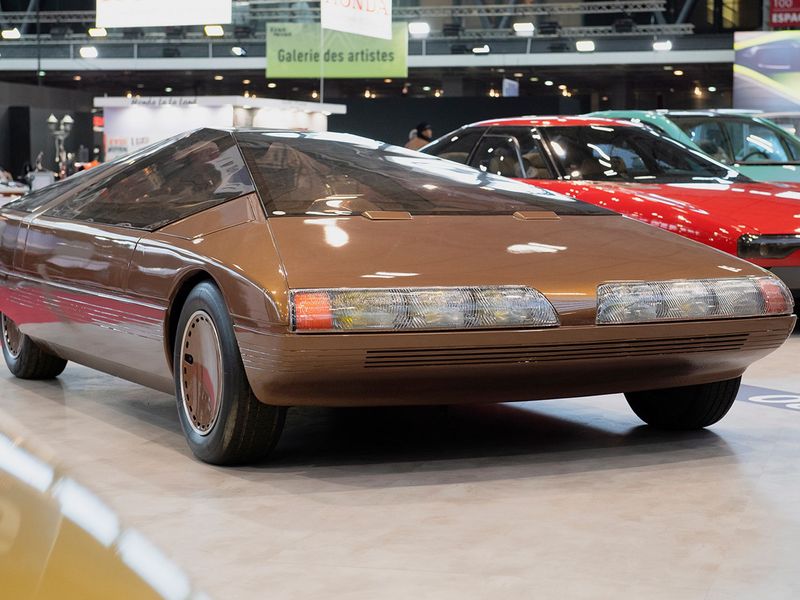
Triangles ruled everything about the 1980 Citroën Karin. Dreamed up by designer Trevor Fiore, this geometric oddity featured a driver-centered cockpit with a pyramid-shaped greenhouse that narrowed toward the roof.
Unlike conventional cars with side-by-side seating, the Karin placed the driver front and center, with passengers slightly behind on either side.
Think McLaren F1 seating before the McLaren F1 existed!
Control pods flanked the steering wheel, eliminating the need to reach for buttons.
31. Mercedes-Benz C111
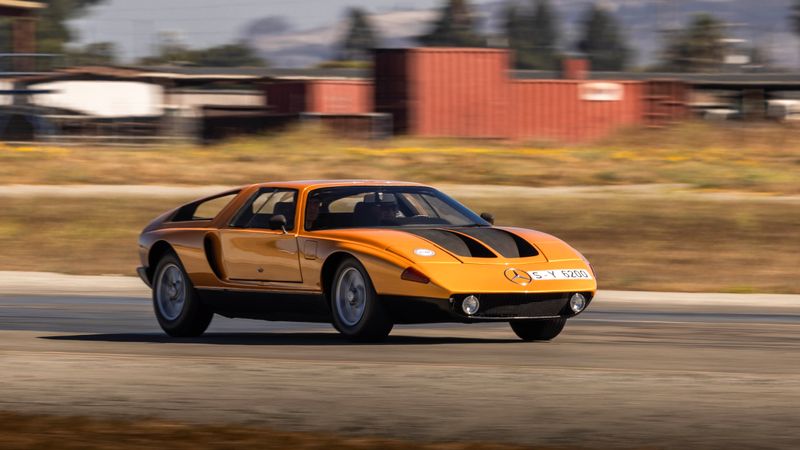
Sporting eye-searing orange paintwork and upward-swinging gullwing doors, the C111 nearly caused riots when Mercedes unveiled it in 1969.
This wasn’t just show—it was a serious testbed for Wankel rotary engines and later, experimental diesel powerplants.
Wealthy enthusiasts literally sent blank checks to Mercedes begging for production versions. The company declined every single one, breaking millionaire hearts worldwide.
Later iterations smashed speed records, with the final C111-IV hitting 251 mph in 1979.
32. BMW Nazca C2
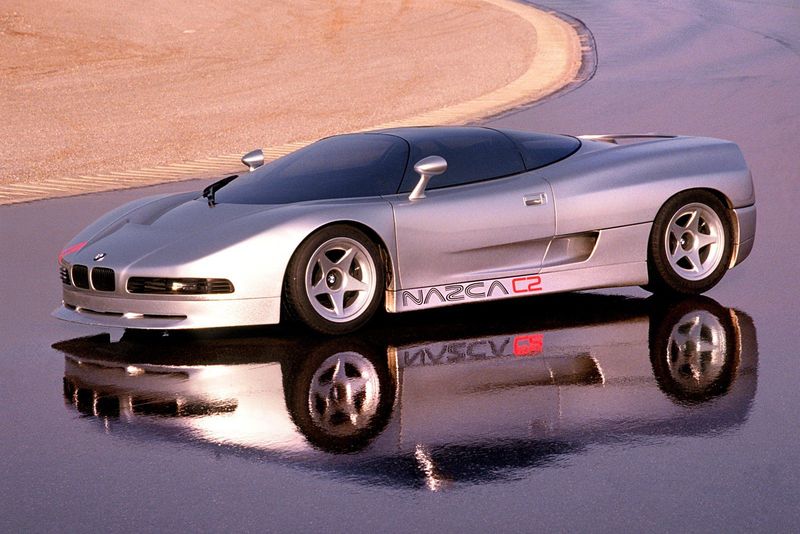
Jaw-dropping doesn’t begin to describe the Nazca C2. Created in 1991 by legendary designer Giorgetto Giugiaro, this Italian-bodied Bavarian supercar looked like it teleported from the future.
Under its sleek carbon fiber skin lurked a modified BMW V12 producing 380 horsepower.
The doors didn’t just open—they pivoted forward along with a section of the roof in a theatrical entrance mechanism that would make spacecraft engineers jealous.
BMW tantalized the public with three versions but never greenlit production.
33. Saab Aero-X
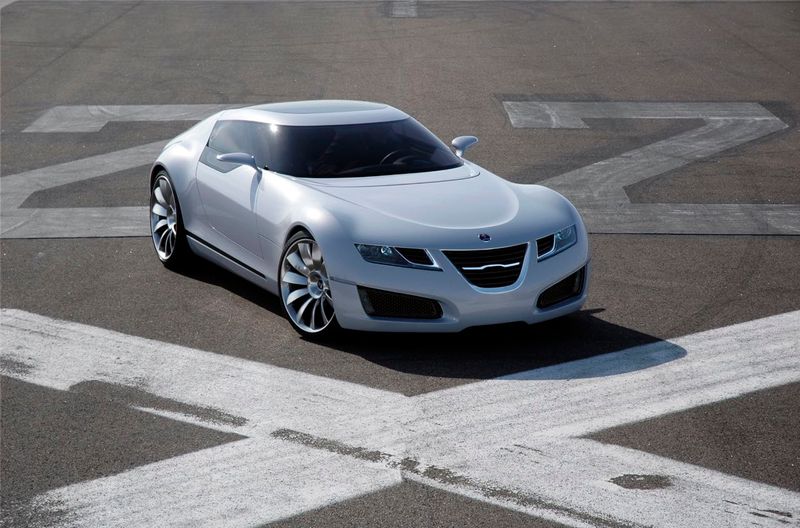
Canopy up! The 2006 Saab Aero-X ditched conventional doors entirely for a fighter jet-inspired canopy that lifted forward, allowing occupants to step in without awkward contortions.
True to Saab’s aircraft heritage, it was the automotive equivalent of a jet fighter.
Powered by a 400-horsepower bioethanol engine, the Aero-X promised environmental consciousness without sacrificing performance.
Its minimalist interior featured a clean dashboard that projected information onto clear panels. Sadly, just as Saab seemed ready to reinvent itself with this stunning concept, financial troubles began.
34. Opel GT X Experimental
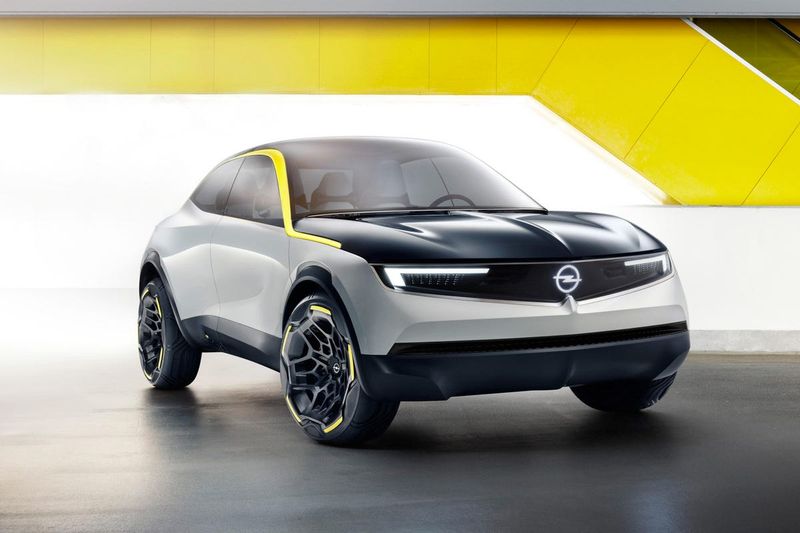
Yellow isn’t typically associated with German cars, but the 2018 Opel GT X Experimental embraced it with gusto!
This compact crossover concept introduced Opel’s “visual detox” philosophy—stripping away unnecessary design elements for pure, clean surfaces.
Suicide doors opened to reveal a minimalist interior dominated by a massive screen stretching across the dashboard. No side mirrors here—cameras did the job instead, reducing drag and visual clutter.
The GT X’s most distinctive feature was the “Vizor”—a single dark panel integrating headlights, sensors, and emblems into one sleek face.
35. Infiniti Emerg-E
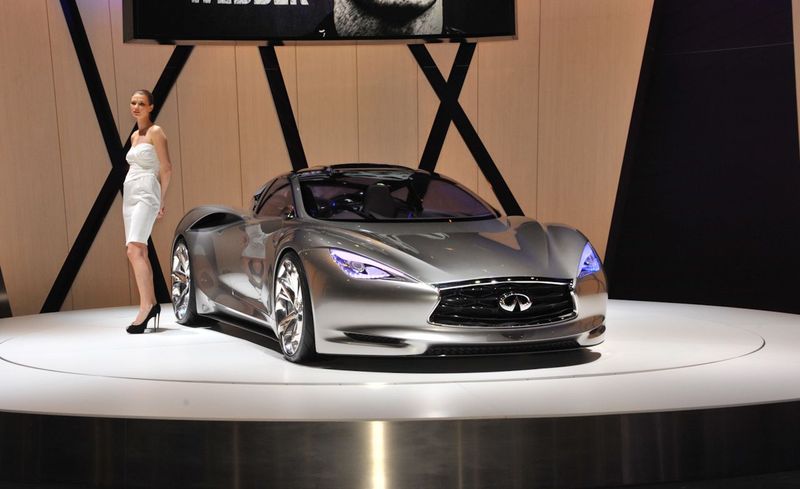
British engineering met Japanese design when Infiniti unveiled the stunning Emerg-E in 2012.
This curvaceous mid-engine hybrid supercar packed twin electric motors producing 402 combined horsepower, with a small gasoline engine serving as a range extender.
Unlike many pie-in-the-sky concepts, the Emerg-E actually worked! Infiniti built several functioning prototypes that journalists actually drove.
The acceleration was electric in every sense—0-60 mph in just 4 seconds with barely a whisper.
36. Lexus LF-LC
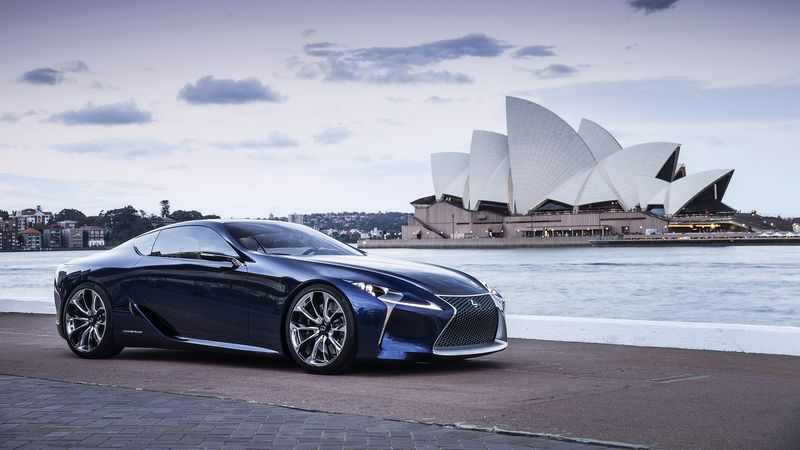
Jaws literally dropped when Lexus unveiled this ruby-red beauty at the 2012 Detroit Auto Show. Nobody expected the traditionally conservative luxury brand to produce something so wildly sensual and aggressive.
The flowing lines and impossible curves made the LF-LC look like it was carved from a single piece of molten metal.
Its dramatic spindle grille and squinting LED headlights would later influence Lexus’s entire design language.
37. Kia Kee
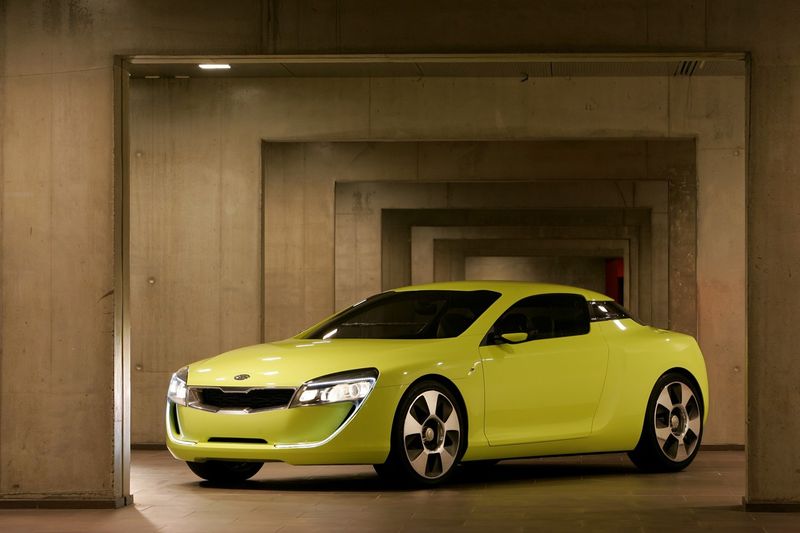
Before Kia became the design powerhouse it is today, there was the Kee.
Unveiled in 2007, this little-remembered sports coupe concept marked the beginning of Kia’s transformation from budget afterthought to style leader.
Penned by design guru Peter Schreyer (fresh from Audi), the Kee introduced the now-iconic ‘tiger nose’ grille that defines every modern Kia.
Powered by a 2.7-liter V6, the Kee promised performance to match its looks. Though it never reached production, this concept’s DNA lives on in every stylish Kia you see today.
38. Hyundai HCD-14
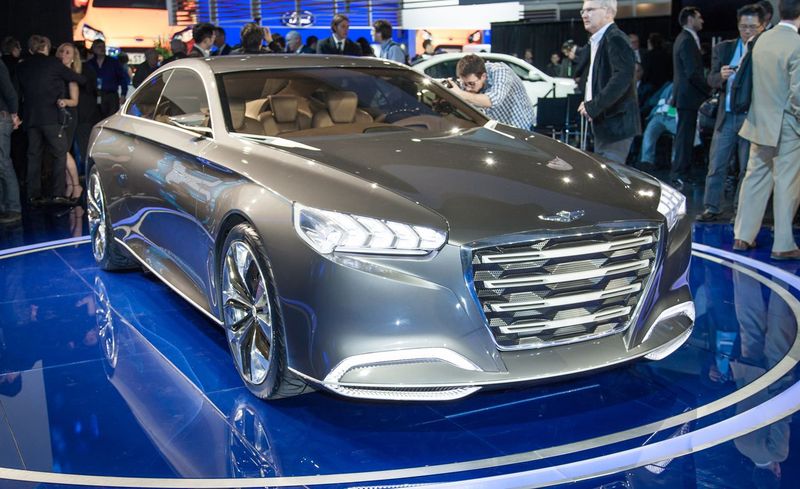
Rocking suicide doors and a silhouette that could make an Audi designer weep with envy, the HCD-14 blindsided the automotive world in 2013.
Hyundai wasn’t supposed to create something this achingly beautiful – yet there it stood, challenging luxury stalwarts with its audacious presence.
The interior was even more revolutionary, featuring eye-tracking technology and 3D hand gestures to control vehicle functions.
No buttons, no knobs – just wave your hand like a conductor to adjust the volume or change tracks.
39. Bugatti ID 90
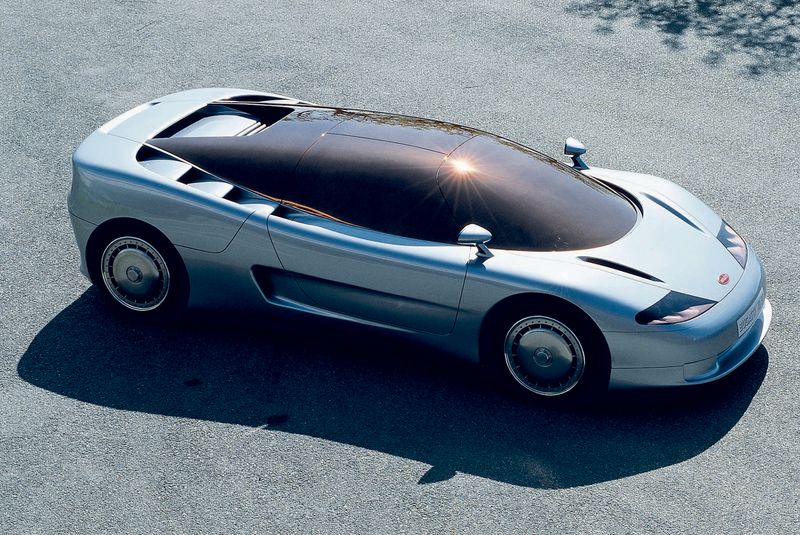
Long before the Veyron redefined speed, Bugatti explored a different path with the forgotten ID 90 concept.
Created in 1990 by designer Paolo Martin, this curvaceous beauty emerged during Bugatti’s Italian ownership period, years before Volkswagen revived the brand.
Unlike the brutal, engineering-focused hypercars that would later define Bugatti, the ID 90 was all sensuous Italian curves and artistic expression.
Its low, wide stance housed a proposed 3.5-liter V12 behind the driver, while its cockpit featured an aircraft-inspired layout. Financial troubles destroyed this vision before it could reach production.
40. DeLorean DMC-24
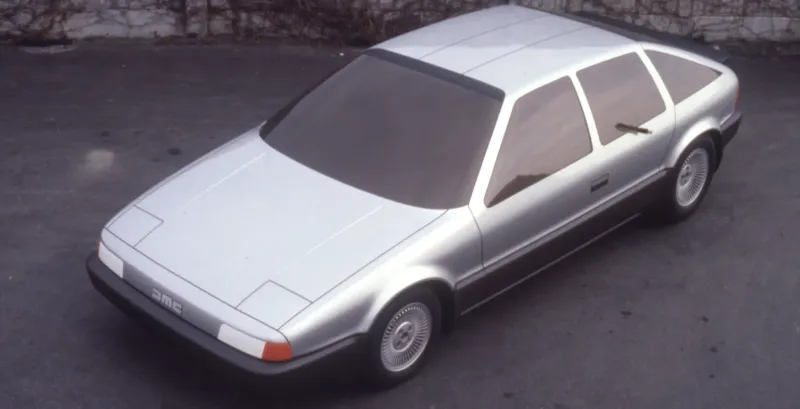
Great Scott! Few people know that before the DeLorean Motor Company’s spectacular collapse, they had plans for a four-door follow-up to the iconic DMC-12.
The DMC-24 concept aimed to bring gullwing glory to the family sedan market.
Sketches and clay models revealed a stretched version of the stainless steel wonder with four seats and – yes – four gullwing doors.
Imagine the school pickup line with kids emerging from those futuristic portals! The practical challenges would have been enormous, but so was John DeLorean’s ambition.
The company’s 1982 demise ensured this family-friendly time machine never materialized.
